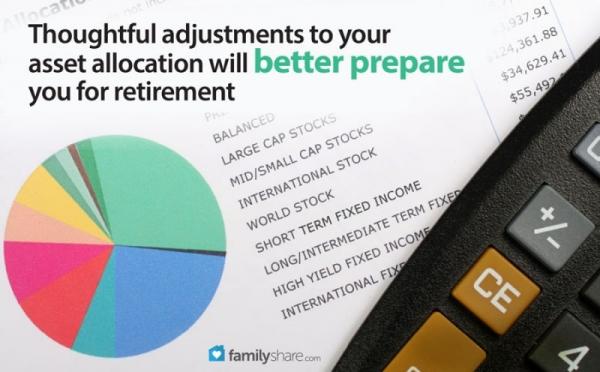
Asset allocation is the practice of dividing a portfolio strategically between several asset classes. There are three classes of assets that typical families should include in their investments: stocks or equities, bonds and cash.
By the end of this short article, you'll know enough to begin to balance your portfolio.
First, some definitions
Equities
: This is a Wall Street word for stocks, referring to their name on financial statements.
Bonds
: Bonds are loans issued by corporations and governments with set payment schedules, most commonly periodic interest payments with all principal paid at once at the end of the loan term, or maturity.
Cash
: In investment speak, cash doesn't refer to the stuff under the mattress, but the stuff in the bank and similar places. Very short-term government and corporate debt securities (short, as in 30 to 90 days) are typically included in investors' definitions of cash.
One way to invest in each of these asset classes is by using mutual funds or ETFs (Exchange Traded Funds); together, let's call them "funds."�
The pros and cons
-Equities have the highest risk and are generally expected to have the highest return on investment.
-Bonds have less risk, but still risk loss of principle, and the income on bond funds varies significantly from year to year.
-Cash features ultra-low risk and correspondingly low returns.
The goal of asset allocation is to match your portfolio to your investment objectives, risk tolerance, and goals for return on investment.
For short-term objectives, investing only in cash or in cash and bonds would generally make sense. For long-term objectives, like retirement, investing in a combination of all three would be considered wise.
People in their 20s investing for retirement have the flexibility, if they are risk tolerant enough, to be invested 100 percent in equities. As people age, retirement gets closer and the pain of a major setback in investment returns looms larger — so they generally shift the allocation to include more bonds and even a bit of cash. It is prudent for most people to keep a portion of their investments in equities even after retirement because retirement itself can last 20 years or more.
There are no absolute rules in asset allocation, but many investors seem to see about two-thirds of a portfolio as a limit for any single asset class.
Some investors use asset allocation shifts as a way to "time the market"�— that is, they shift their asset allocation not based on changes in their own circumstances (like nearing retirement) but on their opinion of the market's changes. This practice will increase the risk in your portfolio because you are adding a new variable to the equation. You've now added your economic and financial forecasting skills to what is already a complex equation. There is plenty of evidence that the chairman of the Federal Reserve has difficulty forecasting economic results — and he can influence them more than anyone. Chances are, you'll do even worse and risk making your allocation shifts at the wrong times, causing losses you wouldn't otherwise experience.
As you go through life, you can and should slowly adjust your asset allocation. This can often be accomplished simply by investing new dollars in the asset class you'd like to grow. Over time, this should have the effect of reducing the percentage of your portfolio invested in other assets. In this way, you never need to sell assets just to shift your allocation.
Thoughtful adjustments to your asset allocation will better prepare you for retirement.

